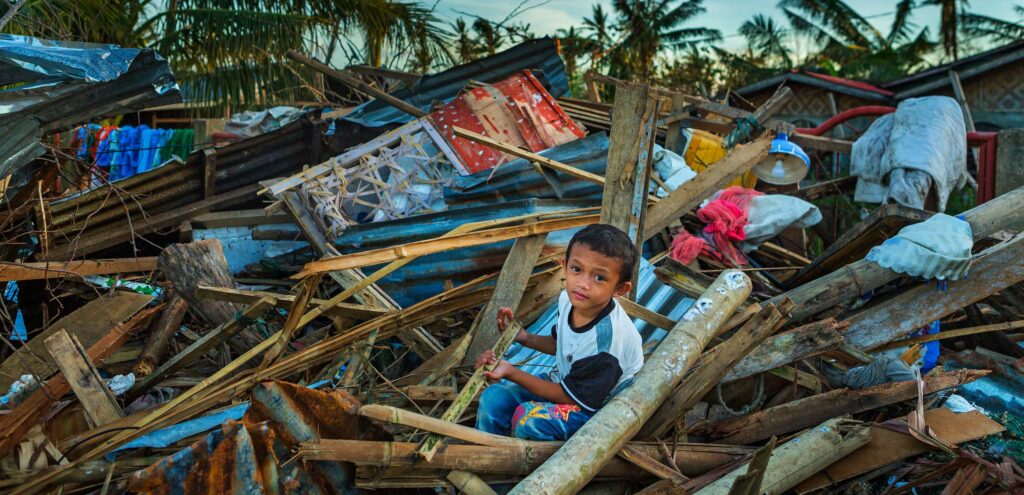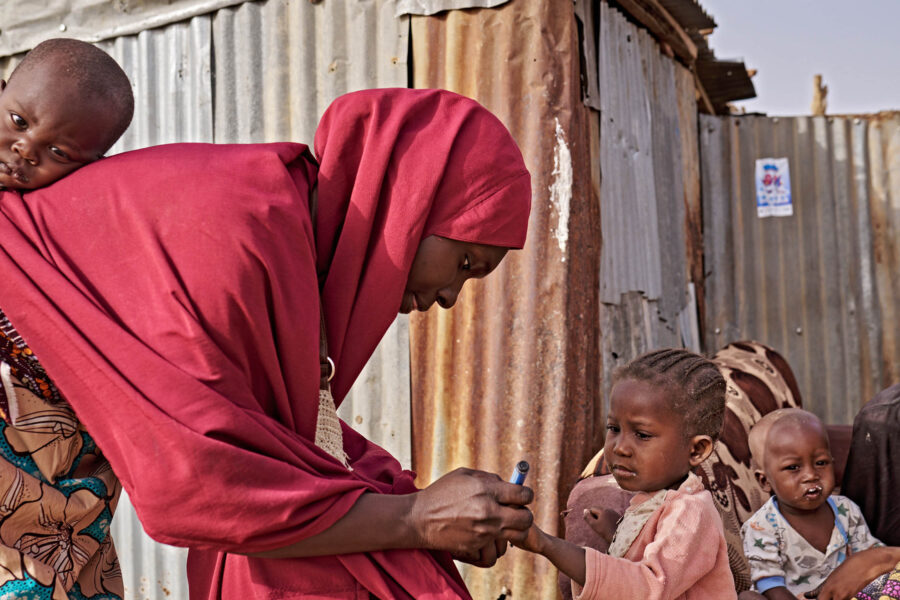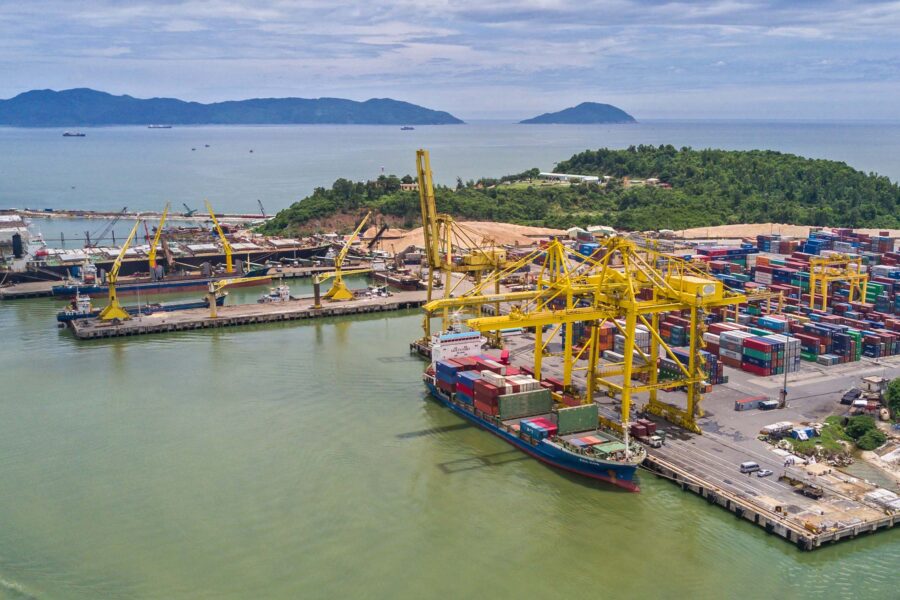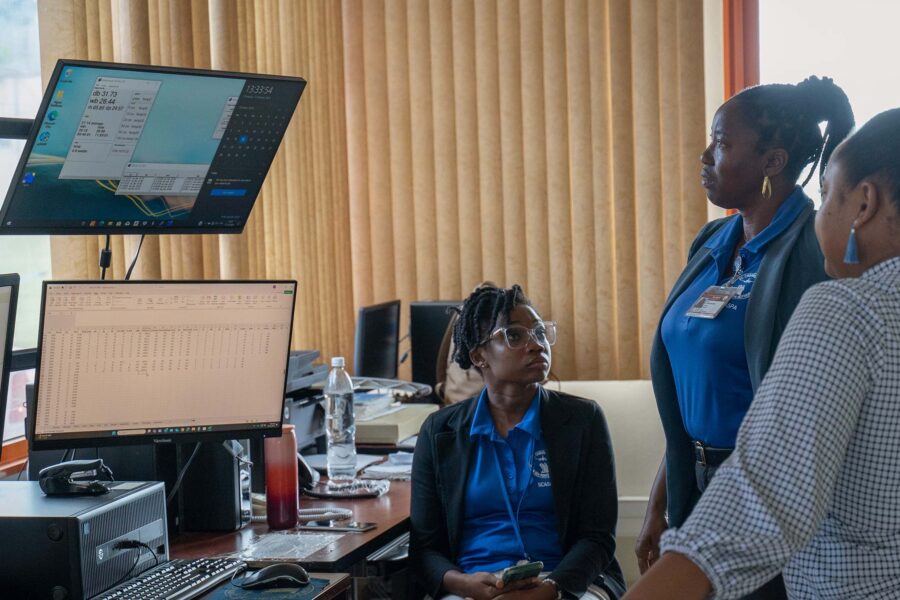Can the Paris Agreement deliver climate justice?
Eight years on, the Paris Agreement’s ambition to achieve climate justice appears woefully off course. Can the Sustainable Development Goals, with their emphasis on empowering the most vulnerable communities, help steer the COP process toward redressing the inequity of climate change?
Climate — Global

As the first treaty under the global climate regime to mention the concept, the Paris Agreement certainly aspires to deliver “climate justice.” Yet, despite the progress made so far, climate plans are insufficient to keep global temperature increase below 1.5°C. The world keeps breaking all records: high-category hurricanes, wildfires, flooding, climate-induced displacements. We are also entering into new territories, with monitoring and early warning systems being tested to the limit, increases in climate-induced diseases, and sea-level rise affecting the statehood of atoll nations.
While no country is immune to the wrath of a warming planet, vulnerable countries and marginalized communities who contributed the least to the problem are suffering the most. This is leading to both global and national climate injustice. Such injustice would be worse without the progress triggered by the Paris Agreement, since every fraction of a degree matters to mitigate the already dire consequences of our planet’s warming, including the associated and exacerbated inequality.
The question becomes, therefore: is the Paris Agreement’s design enough to achieve the intended just outcomes at scale and at adequate pace?
The answer is no. But the Paris Agreement is not the only forum or process with a role in delivering these outcomes. In fact, its goals were never meant to be achieved in a vacuum, but rather in the context of the Sustainable Development Goals (SDGs) – with all hands on deck!
The Paris Agreement’s pre-conditions of success
The Paris Agreement was not conceived to fulfill its promise only with the 200 governments who signed it but rather on a broader ecosystem.
On the one hand, the non-binding nature of the national commitments made the agreement vulnerable to national politics and governance. Countries are not legally required to reduce emissions or achieve the other targets and objectives included in their nationally determined contributions. This means that lack of leadership at the national level can directly undermine the agreement’s effectiveness.
On the other hand, the Paris Agreement’s binding accountability processes – through its enhanced transparency framework, compliance mechanisms, and global stocktake – relied on a range of domestic and international stakeholders to trigger the right level of pressure on governments, and required enhanced governance and participation, to generate an effective, evidence-based decision-making process. This will be tested through the Paris Agreement’s first global stocktake at COP28.
The spirit of solidarity was and still is a critical ingredient to galvanize diplomacy, in good faith, while building trust. Through COP28 the trust and global solidarity deficit on climate must be reduced: the Green Climate Fund should meet its replenishment floor of USD 10 billion, while developed countries’ 2009 commitment to mobilize USD 100 billion per year from 2020 must be achieved. There is heightened expectation for operationalizing and possibly capitalizing the loss and damage fund, which took three decades to be established. All of this is at a time when we should be mobilizing trillions for a green, sustainable, and resilient future. A great chunk of those trillions is out there but must be aligned with the Paris Agreement and SDGs, including phasing out damaging subsidies and retrieving illicit financial flows, while creating fair fiscal space for countries to make the necessary investments for the needed transformation.
By embracing the principles of equity and common but differentiated responsibility, respective capability was essential to transition from the mitigation-focused Kyoto Protocol (with requirements only for developed countries) to a universal agreement. This universal agreement embraced other priorities from vulnerable communities and countries (particularly on adaptation and loss and damage).
Bringing the 5Ps to bear on COP
At the heart of the 2030 Agenda are the five critical dimensions known as the 5Ps:
- People
- Prosperity
- Planet
- Partnership
- Peace
To deliver climate justice, these principles should be fully embraced within the COP process.
People
For decades, climate efforts have been driven by a highly technocratic and carbon-centric approach. This approach has failed to mobilize the hearts and minds of a wide range of stakeholders and leaders to drive systemic change.
A people-centered approach starts by integrating adaptation and the limits to adaptation (tackling losses and damage) along with efforts to cut greenhouse gas emissions. Then, to scale and accelerate the green energy or agriculture transition, we should think of the people who demand and consume the energy or agricultural products, the people who produce and supply them, the people disproportionately affected by the harms caused by our dependence on fossil-fuel-based energy systems, and the unsustainable food system.
We should also pay attention to the people who may be affected by transitioning away from business as usual. This means helping to address past damages and injustices, maximizing women’s rights, sharing the benefits for workers and communities, and fostering intergenerational justice. All this needs to be translated into national, local, and global communication strategies, storytelling, and campaigns based on movement-building and organizing.
Prosperity
A renewed sense of solidarity is paramount to move from a burden-sharing mindset toward a vision of shared prosperity.
To achieve this vision, we know that we need to mobilize and make accessible finance, specific technologies, human capacity, and know-how. But, as highlighted under the Bridgetown Initiative and by the Vulnerable Group of 20 (V20), equitable mobilization and access to investments at adequate scale and speed will not be possible without a profound, structural reform of the financial and debt system (which currently relies on colonial legacy). It will also require a fairer distribution of windfall profits from fossil-fuel companies and other carbon-intensive sectors. Trade, a significant contributory factor to climate change, must also be harnessed to share prosperity while also furthering climate action.
Meanwhile, we cannot ignore the risk of creating new injustices and vulnerabilities if we fail to address pre-existing structural drivers of injustice in energy markets, industrial supply chains, or land ownership and rights. It is therefore imperative to include greater engagement with social justice issues when reforming or establishing procedures and institutions. This should be done through enhanced participation, country and community ownership of strategies and implementation plans, and effective accountability mechanisms.
Planet
If we are serious about protecting the planet, we cannot keep on using “more physical resources and produce more emissions than nature is capable of supplying in a sustainable manner” (to quote ‘The Limits to Growth’). We need a different approach to managing our planet’s natural resources, one that promotes a more circular economy and supports the needs of both present and future generations. This approach cannot rely on technology alone – doing so risks delaying the fundamental and necessary consumption and behavioral changes, as well as the decision-making, needed to prevent us spiraling into more unsustainable territories.
It also means creating the right guardrails and global governance to minimize the unintended adverse effects that climate-action measures and technologies could have. For example, critical transition minerals needed to scale up the use of renewable energy highlight the need to take a people, prosperity, and planet-centered approach. This sector holds immense potential for economic growth in resource-rich nations. However, past experiences have linked natural-resource sectors to human rights abuses, economic exploitation, and governance failures. A just transition necessitates new economic models and policies, focusing on value addition in mineral supply chains and technology transfer. Yet it must also reconcile with the protection of activists, the welfare of vulnerable communities, people’s rights in land use, labor rights, protection of conservation areas and cultural sites, and the equitable participation of resource-rich nations in decision-making.
Partnership
Climate change also pushes us to contemplate collaborative and integrated governance across diverse governmental levels and societal sectors. Given that climate change is a global predicament demanding collective action across borders, conventional governance structures may lack the capacity for such extensive collaboration. It will be critical to strengthen these structures while also strengthening or fostering new transformative coalitions (or clubs) to create “a race to the top.”
Meanwhile, 2,180 climate-related litigation cases have been filed in 65 jurisdictions as of December 2022, with a steady increase from 884 in 2017 to 1,550 in 2020. Children, youth, women’s groups, local communities, and indigenous peoples are leading these cases and driving climate change governance reform in more countries. Litigating climate justice at the national and international level is a promising, alternative civil (or complementary regulatory) channel to pursue specific climate-justice causes.
Peace
This dimension requires a better understanding of the nexus between climate, conflict, fragility, and development. Indeed, as highlighted in the Intergovernmental Panel on Climate Change’s 2023 Synthesis Report, climate change can be a conflict multiplier as it could trigger unforeseen conflicts or exacerbate existing ones. This is particularly evident when climate effects constrain resources: droughts or floods can create drinking water scarcity or impact food supply, heightening poverty. These effects are felt disproportionately by those already in the most vulnerable and conflicted situations.
Least developed countries and small island developing states are on the frontlines of the climate crisis. Many of these countries’ people and communities are affected by fragility or conflict, or face high humanitarian needs and insecurity. They also have the least resources to cope with and adapt to such shocks and stressors. This issue will be highlighted for the first time prominently by the COP28 Presidency to foster investment in anticipatory action and adaptive development in these communities.
A new Marshall Plan
In conclusion, while the Paris Agreement is a key tool in combating climate change, it is not enough to achieve global transformation alone. The success of Paris depends on interconnected global efforts and commitments: not just governmental compliance but also active participation involving a wide range of stakeholders. Achieving equity and shared prosperity requires a comprehensive integration of the SDGs into the COP process and adherence to the 5Ps. As COP28 approaches, renewed global commitment and solidarity – like a new Marshall Plan – are required to address the urgent needs of vulnerable communities and ensure a sustainable future.





